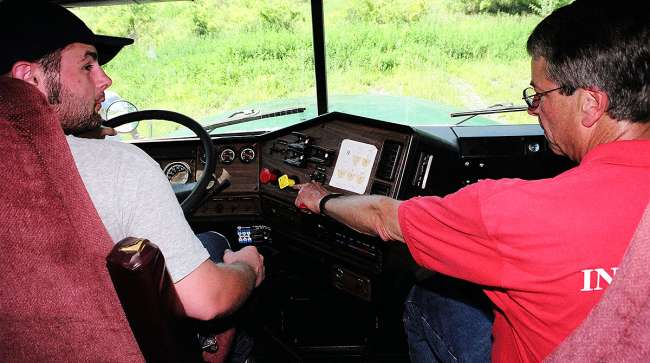Senior Reporter
California Approves a 15-hour Minimum Driver Training Requirement for CDLs

California legislators have passed a bill requiring that entry-level truck drivers spend at least 15 hours in training behind the wheel to be eligible for a commercial driver license.
The California driver-training requirement is more stringent than one adopted by the Federal Motor Carrier Safety Administration in December 2016.

Monning
“This measure will ensure that drivers of big rigs and other large vehicles have the necessary experience to drive safely on our streets and roads by establishing a minimum number of behind-the-wheel training hours,” Democratic state Senate Majority Leader Bill Monning said in a statement last month. “These stronger training standards will save lives.”
FMCSA’s rule only requires that the training provider not issue a certificate to a driver until the driver has demonstrated proficiency in performing all driving skills. It carries a compliance date of Feb. 7, 2020, and does not require a minimum number of hours of classroom instruction.
In California, existing state law requires — in line with prior federal regulations — an individual to pass a written test and a driving test to obtain a commercial driver license. However, it does require a course of instruction prior to taking the tests.
But California Senate Bill 1236, recently signed into law by Democratic Gov. Jerry Brown, requires the state Department of Motor Vehicles to no later than June 5, 2020, adopt regulations related to entry-level driving training requirements for commercial motor vehicle drivers.
California SB1236 by Transport Topics on Scribd
“What the bill was really aimed at was the CDL mills in California,” Don Lefeve, president of the Commercial Vehicle Training Association, told Transport Topics. “There are a lot of fly-by-nights out there that aren’t conducting the type of training that should be conducted.”
Lefeve added, “But the bigger issue right now is that the CDL mills aren’t required to be licensed by the state’s Bureau for Private Postsecondary Education. This is a loophole that we have discussed and will be discussing with California legislators.”

Lefeve
An analysis of the California bill that passed said, “Applicants for a barber’s license in California are required to log 1,500 hours of training before being licensed to cut hair. Even teens seeking a general Class C provisional driver’s license must log at least 50 hours of training behind the wheel. When it comes to a commercial license, however, California requires no minimum number of hours of behind-the-wheel training for a license to drive an 80,000-pound semi-truck.”
The 281-page federal entry-level driver training rule, largely the result of recommendations sent to the agency by a committee of industry stakeholders, revises the standards required for new interstate and intrastate commercial vehicle operators to obtain a Class A and Class B commercial driver license.
The basic provisions in the rule, mandated by the MAP-21 transportation law, are largely the result of a series of meetings between February 2015 and May 2015 of an FMCSA-appointed, broad-based stakeholder group known as the Entry-Level Driver Training Advisory Committee.
The 25-member committee issued its consensus agreement in May 2015, which included a requirement that Class A CDL driver-trainees receive a minimum of 30 hours of training behind the wheel, with at least 10 of those hours on a driving range.
However, the final rule was based on a “performance-based” approach to behind-the-wheel training versus an approach requiring that a minimum number of hours be spent in the hands-on behind-the-wheel training, an issue that was the topic of extensive debate by the committee.
Lefeve, a member of the committee, said his trade organization concurred with the 30-hour original recommendation of the stakeholder committee. However, he said FMCSA did not have the required data to support a rule that stipulated a certain minimum time behind the wheel would improve safety.




